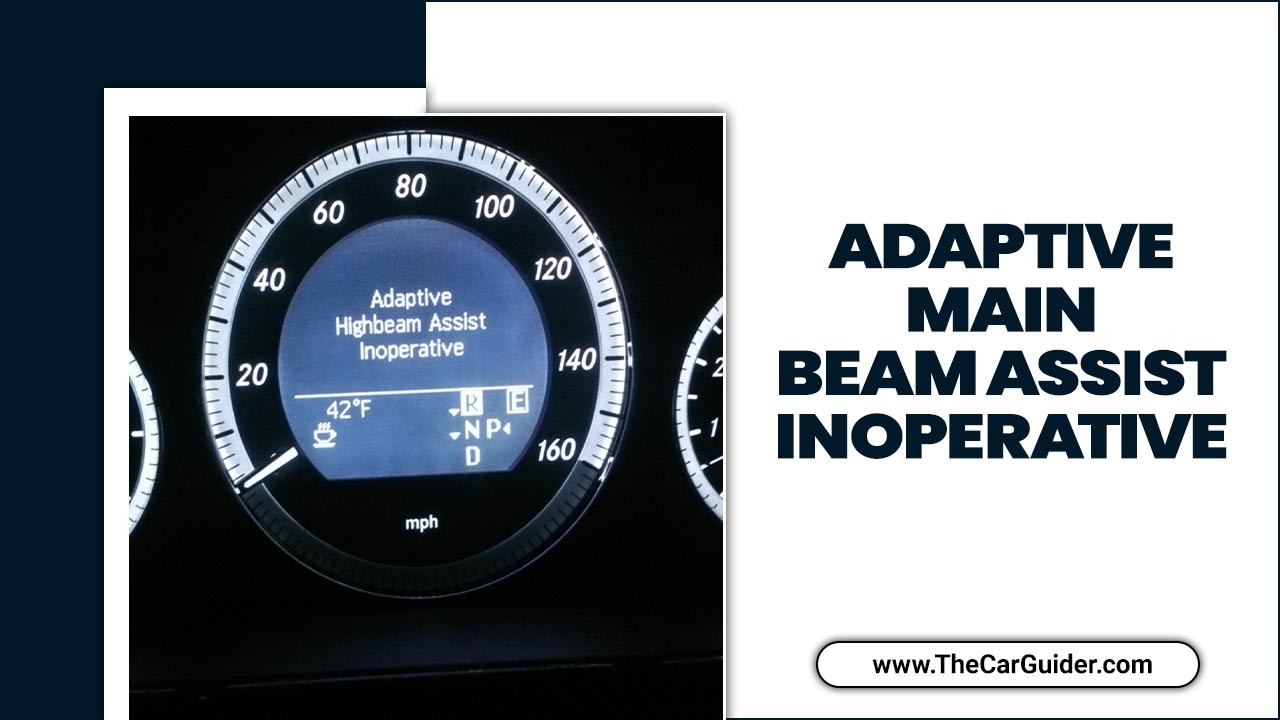Adaptive Highbeam Assist (AHA) is a crucial safety feature that automatically adjusts your headlights between high and low beams, optimizing visibility without dazzling other drivers. But what happens when this system malfunctions? This article explores the common causes of an “Adaptive Highbeam Assist Inoperative” warning, how to troubleshoot the problem, and preventive measures to keep your AHA system functioning correctly.
Understanding Adaptive Highbeam Assist (AHA)
AHA uses sensors like cameras or radar to detect oncoming traffic and automatically switch between high and low beams. This intelligent system maximizes visibility for you while minimizing glare for others, significantly improving night driving safety. AHA enhances safety by providing better illumination of the road ahead without causing discomfort or distraction to other road users. This technology relies on several key components:
- Sensors: Cameras or radar systems mounted on the vehicle detect the presence and distance of other vehicles.
- Control Module: This module processes the sensor data and commands the headlights to switch between high and low beams.
- Headlights: Equipped with mechanisms to switch rapidly and smoothly between high and low beam settings.
Common Causes of “Adaptive Highbeam Assist Inoperative” Warning
Several factors can trigger the “adaptive highbeam assist inoperative” warning:
- Faulty Sensors: Dirt, debris, or damage to the sensors can obstruct their view, leading to malfunctions.
- Electrical Issues: Wiring problems, blown fuses, or a malfunctioning control module can disrupt the system.
- Software Glitches: Outdated or corrupted software can cause errors in the AHA system.
- Obstructions: Physical obstructions like stickers or covers on the windshield near the sensor can interfere with its operation.
Impact on Night Driving Safety
A malfunctioning AHA system significantly impacts night driving safety. Without automatic high beam control:
- Reduced Visibility: Drivers may struggle to see potential hazards in low-light conditions.
- Increased Glare: Manual high beam use can blind oncoming drivers, increasing the risk of accidents.
- Driver Fatigue: Manually switching between high and low beams can be distracting and tiring, especially on long drives.
Troubleshooting Adaptive Highbeam Assist Problems
If your AHA system is inoperative, try these troubleshooting steps:
- Check for Obstructions: Clean the windshield around the sensor area.
- Restart the Vehicle: A simple reboot can sometimes resolve temporary software glitches.
- Consult the Owner’s Manual: Look for specific troubleshooting instructions for your vehicle model.
- Check Fuses: Inspect the fuses related to the headlight system.
When to Seek Professional Help
If the problem persists, it’s crucial to seek professional help. A qualified mechanic can:
- Diagnose the Problem: Use specialized diagnostic tools to pinpoint the exact cause of the malfunction.
- Repair or Replace Components: Fix or replace faulty sensors, wiring, or the control module.
- Update Software: Install the latest software updates to address any known bugs.
Preventing Future Malfunctions
Regular maintenance can help prevent future AHA issues:
- Keep Sensors Clean: Regularly clean the windshield and sensor area.
- Schedule Regular Inspections: Have your AHA system checked during routine vehicle maintenance.
- Stay Updated: Install software updates as recommended by the manufacturer.
Conclusion
A functioning Adaptive Highbeam Assist system is vital for safe night driving. Understanding its operation, potential problems, and preventive measures can help ensure optimal visibility and safety on the road. Don’t ignore warning messages; address them promptly to avoid compromising your safety and the safety of others.

